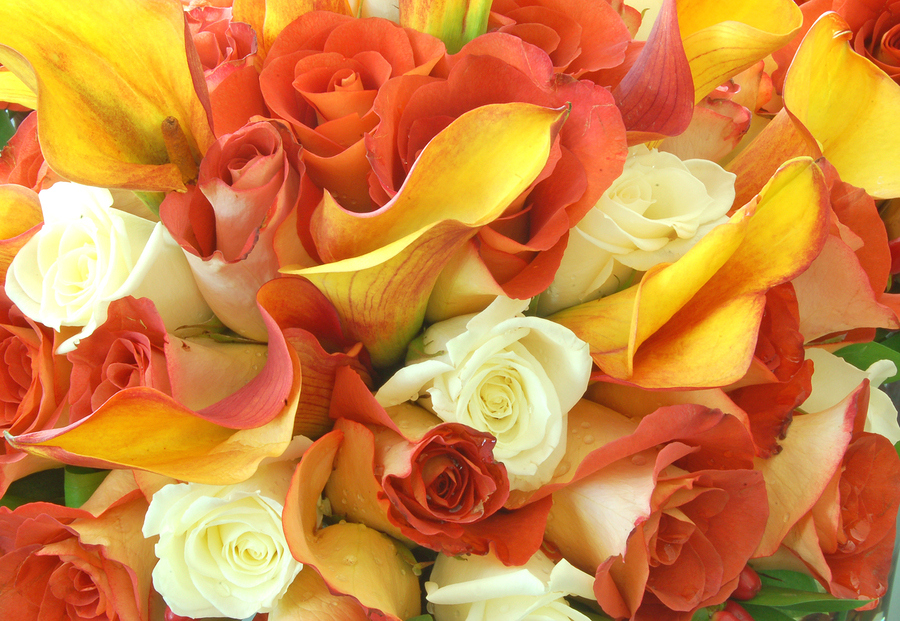
I did it. My daughters did it. My mother probably did it. I’m sure you even thought about it when you were young.
Planning a wedding is something most girls dream about. I’m sure the first thing the majority of girls think about is the dress, but flowers were always second on my list.
The flowers enhance the design and tone of the wedding. They give the bride and groom an outlet to show their style and personality. There are many factors that may be taken into consideration when selecting flowers, such as color, style, budget, availability, fragrance and symbolism. The art of combining these elements ultimately results in an expression of who the bride and groom are.
The color is one of the single most determining factors for selecting wedding flowers. The colors of the flowers certainly set the mood and can also symbolize emotions. For example, orange is vibrant, energetic and flamboyant while blue is peaceful, quiet and harmonious. Red symbolizes love, passion and romance while green is a soothing, revitalizing color of nature. Modern white is elegant, sophisticated, and pure and pink is feminine, charming and sweet. Psychologically, the happiest color in the spectrum is yellow, the color of sunshine, energy and cheer.
Style is often predetermined by the venue and the bridal gown. A hip, urban loft-style venue requires sleek, modern floral arrangements, such as calla lilies or orchids in a cylinder vase. Historic venues tend to be rich in detail and require a floral arrangement that preserves the integrity of the venue. The flowers itself can certainly be modern, but may be presented in traditional candelabrum.
The budget must be considered when selecting flowers. When designing around limited budgets, consider the following tips. Reserve high-end stems for the bride and groom. Limit the number in your wedding party. Concentrate your flower budget on three to four large focal arrangements (i.e., ceremony, guest registry, buffet, and the head table) rather than many small ones. Float or submerge large, higher-end stems, which reduces the amount of flowers you’ll need for that arrangement. And lastly, bunch together less expensive blooms for a striking result.
Flowers that are readily available year-round are calla lilies, roses, orchids, gerbera daisies, gardenias, stock, lisianthus and freesia. A lot of seasonal flowers can be grown out of season, but for a price and they are often questionable. Just be aware that with seasonal flowers, a season can begin or end earlier than expected so you can be caught within weeks, or even days, of a season abruptly ending.
The fragrance of flowers adds what I call a “scent-sational” element to your event. Flowers with a heady fragrance imprint themselves into our memories and can bring one back to a certain memory when unexpectedly encountered. When asked for “scent-sational” recommendations for the bridal bouquet, I suggest garden roses, peonies, freesia or stephanotis. Spicy clove scented stock, clean green bells of Ireland and perfectly pink boronia are excellent choices for mixed arrangements.
Hopefully I have given you some information that could deepen the meaning of your ceremony overall. The relationship you have with your floral designer should be one of trust. Communication is key. I like to work with the bride and groom so that their style, as a couple, is presented to their guests. I feel like I have done my job when I take their rough ideas and refine it into a memorable wedding ceremony that is talked about into the next year.